Top 15 Tourist Attraction in Pisa, Italy
At the central region of Tuscany, the city of Pisa stands at the banks of Arno River with its leaning tower. Home to ancient Ligurian civilization, Pisa is only a short drive away from the shore. This city was located at coastlines of the Ligurian sea, unfolding the meaning of its name – Pisa, an ancient Greek word for marshland. Sediments of Arno River through centuries have separated the city from Pisa’s marine.
An array of iconic churches, classic architecture mixed with curious combinations of art collections are the riches of the legendary city of Pisa. Once a robust maritime republic, Pisa has merged modernity and antiquity together. A wondrous urban area in addition to Tuscany’s popular gastronomy only makes Pisa more irresistible to visit. Learn about the top 15 must-see attractions of Pisa below.
1. Leaning Tower of Pisa – Torre Pendente di Pisa

Iconic Torre di Pisa is a 57 meters tall bell tower, built in the 12th century; a delightful contribution to its adjoining cathedral. Posing as one of the most appraisable architectural mistakes, the leaning tower began to title due to the unstable foundation of its marshy terrain.
The white marble and Romanesque architecture marques Pisa’s tower as the city’s most prominent landmark. Located at the historic center of Arno River, the Leaning Tower of Pisa is noted as one of the most photogenic spots in the world.
2. Piazza Dei Miracoli – Square of Miracles
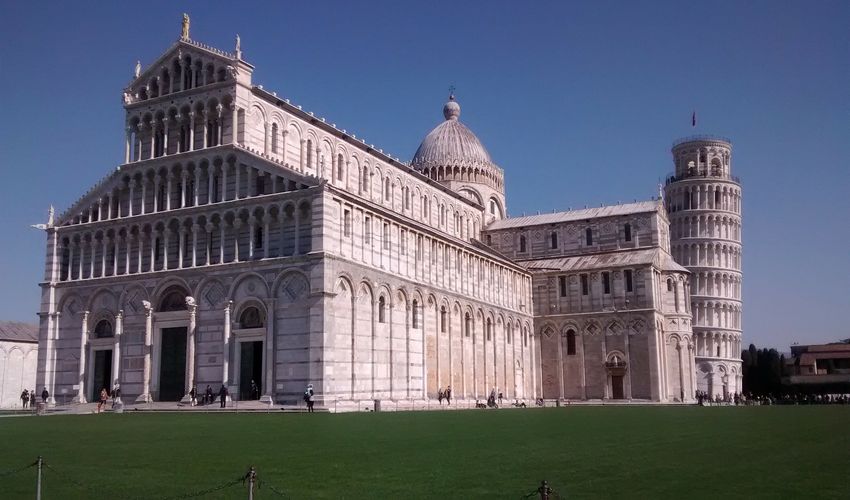
Previously known as Dome Square, Piazza Dei Miracoli is located at the base of Pisa tower. Square of Miracles has earned its name through a poetic expression of this site’s magical beauty, Pisa’s particular Romanesque architecture and the artful dome with the leaning tower beaming at its side; all have inspired the nickname Miracle Square for the place the viewer admires the scenery. Known as the religious crux of Pisa, as this square lies on the path to the cathedral of Santa Maria.
The lush green grass with well-maintained surrounding gives you a shaded green grass to lean back among other visitors; an opportunity to soak in the glorified view of Duomo, the cathedral and Pisa tower together. Cafes, restaurants and local shops are just a hailing distance from the tower. Occasionally, Italian street artists offer astonishing portrait sketches as a memorable token of Pisa around Miracle Square.
3. Cathedral of Santa Maria
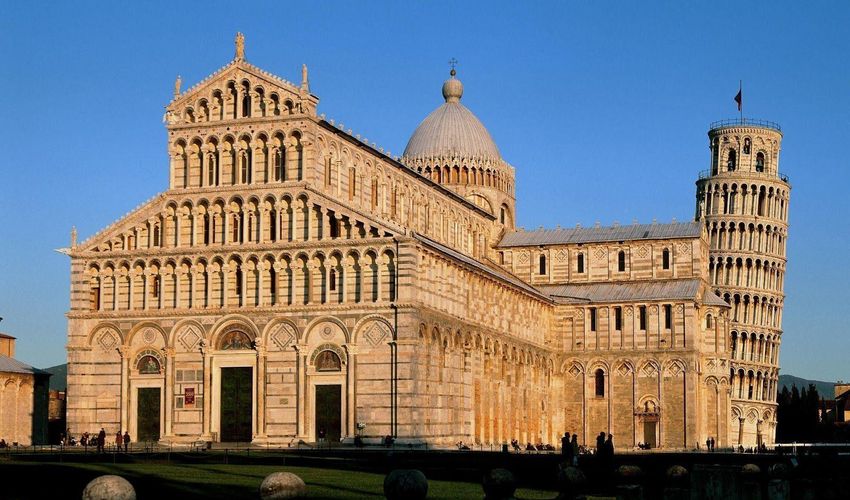
The gothic cathedral of St. Mary is denoted as one of the most beautiful sites in the world. Pisa’s particular Romanesque style of architecture, its white marble and artful dome with the leaning tower at its side; all have inspired the nickname Miracle Square for the place the viewer admires the scenery. Setting the foundation of St. Mary’s cathedral begun in the 11th century with an additional 200 years for its completion.
Renowned artists such as Nicola Pisano have offered their services to the holy quest of cathedral construction. On the inside, white marble pillars stand tall on both sides of its magnificent Hall. Paintings statues of the artists such as the Pulpit of Giovanni Pisano are interior decorations. Outstanding bronze doors, a rich combination of marble and mosaic adornments and the tender attribute of men of faith to the cathedral, create an indescribable feel- a fusion of sentiment and wonder.
4. Battistero di San Giovanni – Baptistery of Pisa
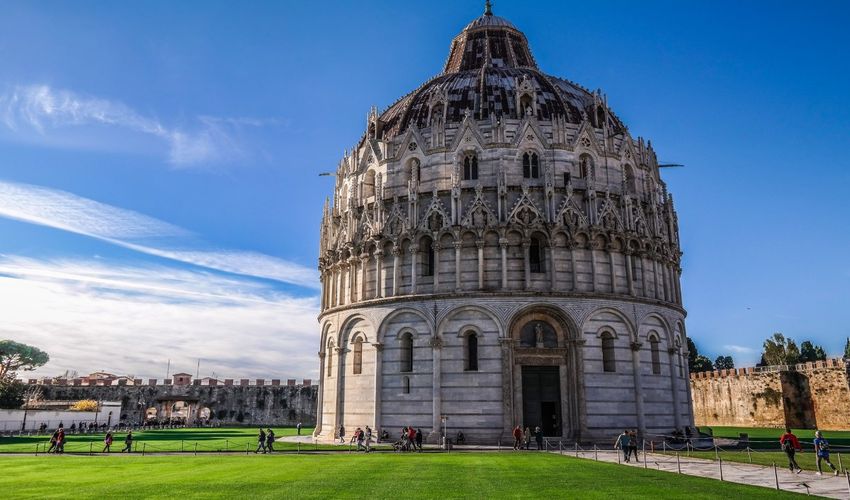
Representing the birth symbol of the city, Baptistery of Pisa is the largest of its kind across Italy. The New Gate, one of the main four portals through the city’s ancient wall, opens to the front of the cathedral and its neighboring baptistery. Intended the same architectural style and material, the baptistery was built in harmony with Santa Maria Cathedral. A combination of Romanesque architecture, with an oriental touch, marks the authentic look of Pisa’s historic structures; a token of Pisa’s maritime era of triumph and wanderlust to the east.
The inner parts are decorated with admirable gothic renaissance and medieval artworks. Acoustic effects and the exceptional view over Square of Miracles are other attractions of Baptistery of San Giovanni.
5. Museo dell’ Opera del Duomo – Cathedral Museum
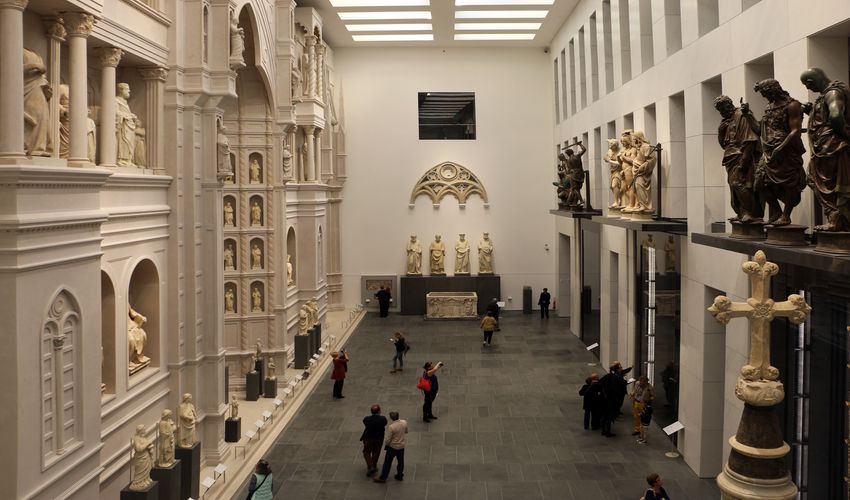
Sitting next to Leaning Tower of Pisa, the cathedral museum embraces the prized items of Santa Maria Cathedral, Pisa tower and the excavated objects from the initial Liguria settlement. A vast exposition of war trophies and foreign contributions to the cathedral contrast with the enchanting Catholic art of Pisan artists.
Throughout 25 rooms of the museum, each room rouses a different sentiment within the viewer. Belvedere of the museum delivers a unique perspective over Piazza Dei Miracoli and the leaning tower. Visiting Museo del Duomo shines a light on St. Mary’s cathedral as a historic and influential entity in the past up to the present day.
6. City Wall of Pisa
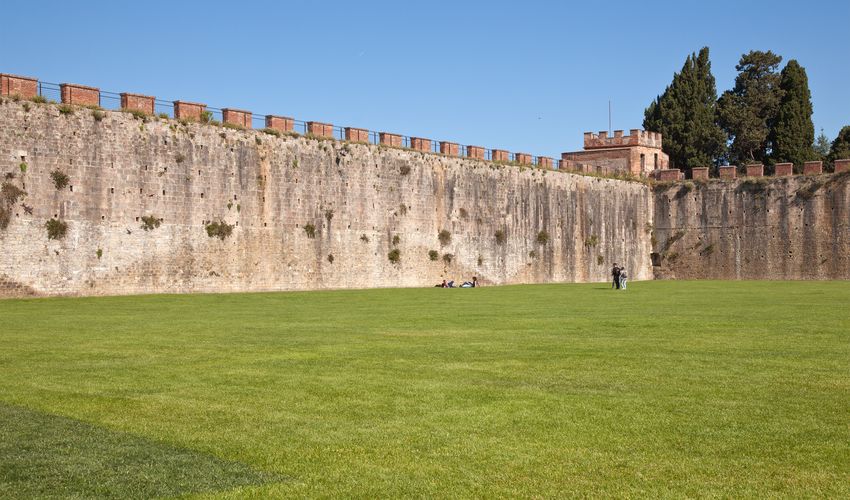
Implying the strength of Pisa, the city walls have survived the test of time. The strategic walls were built in the 12th century to protect the renounced Maritime Republic of Pisa. One of the oldest city walls in Italy, Unique arrangement of wall’s stones made with pieces of tufa boulder, has preserved Pisa’s strategic barrier completely. Four ancient entries to the city- new gate or Porta Nuova, Lucca, San Zeno, and Calcesana- are the antique gates embedded in the wall. Eroded surface, occasional petite plants grown between the stone layers and its impressively resistant gates remind the prominence of ancient Pisa.
To protect the wall, only a three-kilometer stretch is accessible for public viewing, including all four ancient gates. Walk on pathways that once was paved by ancient Pisans and enjoy the dazzling architecture of the wall and its gates.
7. Camposanto – The Monumental Cemetery
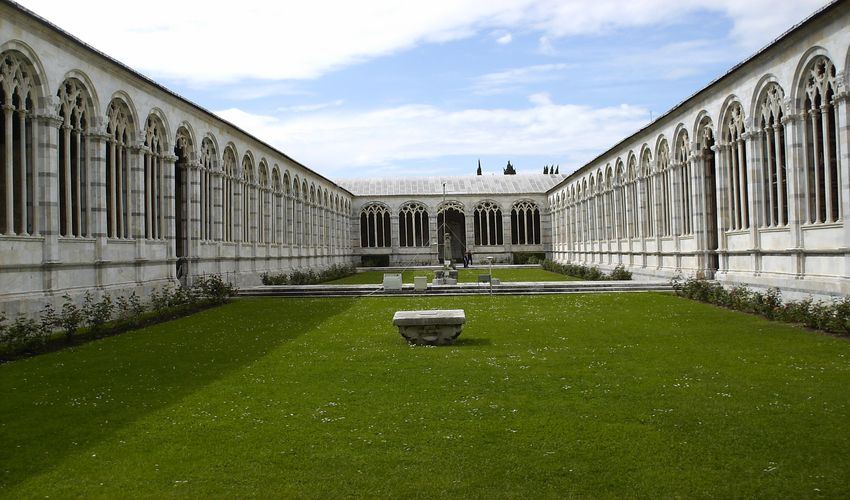
Translating into the sacred site, Camposanto is the final resting place of ancient rulers of Pisa. In the 13th century, sacred soil of Golgotha – place of Christ’s crucifixion – was brought to Pisa by ships; befitting the foundation to the holy monumental construction. Renaissance, Romanesque and later decorations of frescoes from an elegant combination of style; creating an otherworldly impression together with its white marble cloisters and colossal edifice.
A Pisan legend recounts that life is represented in three structures of Pisa; Baptistery, Cathedral of Santa Maria and lastly, Camposanto; symbolizing birth, life, and death in order. Stone coffins belonging to Roman lords of Liguria, Funerary monuments of renaissance and medieval eras are present for public viewing.
The sacred site is also known for its impact on neo-classical art; the Roman sculpture was gifted to the holy cause in the 14th century; becoming an inspiration for many Pisan artists. The ancient cemetery of Pisa is located at Square of Miracles, together with the tower and its cathedral.
8. Piazza Delle Vettovaglie
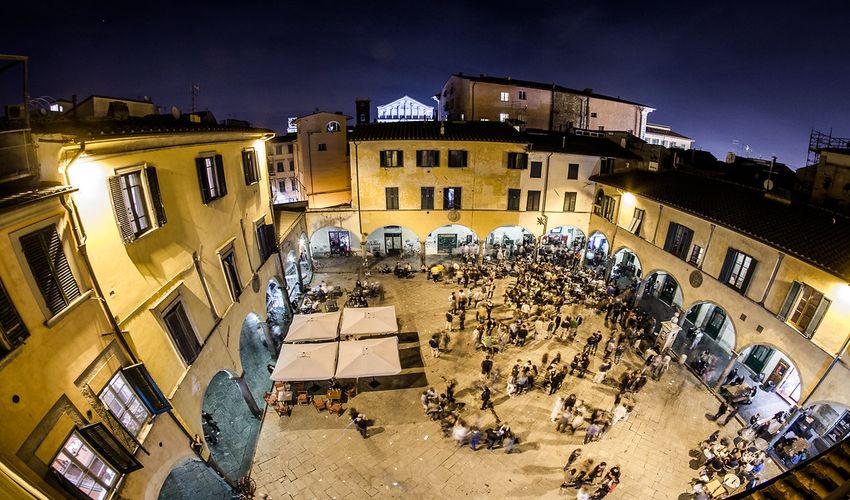
Blending into the day-to-day life of the locals broadens the perspective of regional cultures. Piazza delle Vettovaglie means supply market and was built in the 16th century. It is the core shopping area for fresh produce, handcrafted goods, and souvenirs.
With its arched structure, Supply Square is an example of authentic squares found in Tuscany. Besides shopping, this market is visited for its hearty cafes and restaurants, intermingled with medieval-style towers and surrounding buildings creating an enthusiastic scenery.
A captivating spring water fountain is located in the center of the square, dating back to the ancient Ligurian civilization. A short distance from Knight’s Square, the market is within reach for a break from site seeing and joining the living stir of Pisa for a brief time- a chance to examine one’s life within another culture.
9. Keith Haring Mural Art
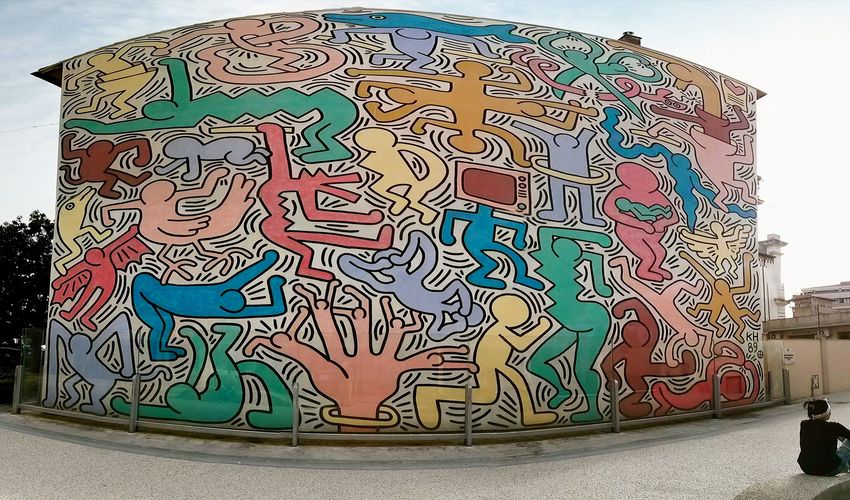
Distinctive with the epitome of Pisa, this American mural art is the foreign residence of the southern wall of St. Antony church. The artist, Keith Haring, conveys a message of peace and harmony through a complex design of 30 figurines; it is a delightful contrast against the battlefield and glory expression of most of the masterpieces present in Pisa.
The 180 sq. meters of the colorful wall that reflects its estranged origin even from a distance. Haring’s mural art is named Tutto-mondo or the entire world, as his wish for global peace. Take a saunter along the northern bank of Arno in the central Pisa and enjoy the artful wall that lives and ages vibrantly with its city.
10. National Museum of Palazzo Reale
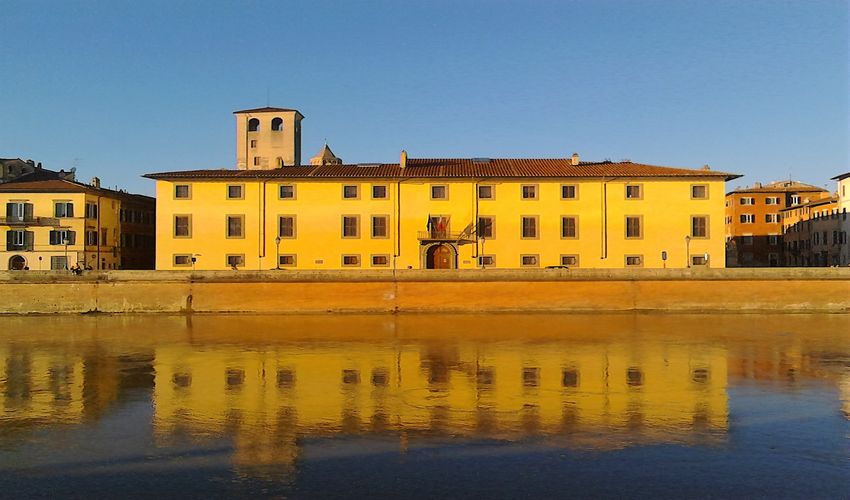
Owned by the Medici dynasty, Royal Palace of Reale was built in the 16th century; lodging the Pisan National Museum since the 1990s. On the inside, the refrained Renaissance aristocratic look and feel leaves the viewer speechless. Identified as a true national treasure of Italy, National Museum offers vast royal collections from different ruling dynasties such as Savoia, Medici and Lorena lineages.
The palace was designed and constructed in the artistic hands of Bernardo Buontalenti. An admiring collection of 900 armors and unique art pieces from Raffaelo and Fiorentino are additional enchanting assemblies found in the national museum of Pisa. A colossal grand staircase leads to the top floor- Outlook of a stunning view over the Arno River and the urban Pisa.
11. Palazzo Blu – Blue Palace of Pisa
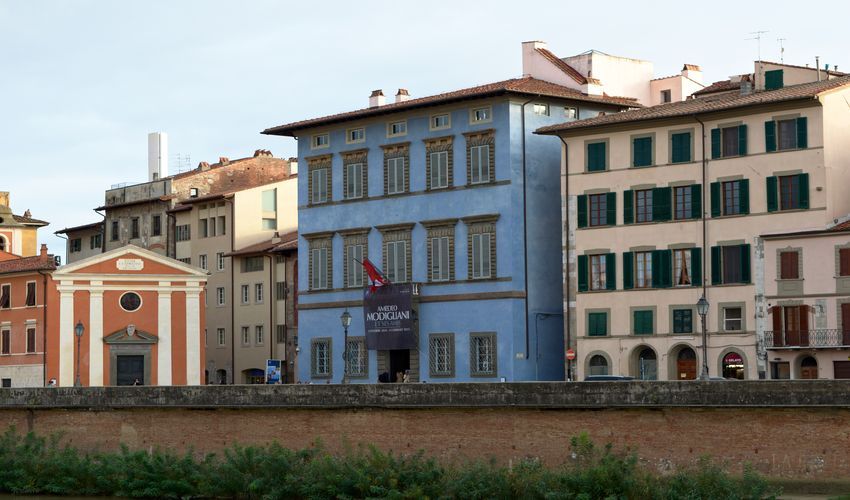
At the antique part of the city, Blue palace introduces itself with its idiosyncratic blue facade at first glance. Home to 6 centuries of art from various Pisan artists, the Blue palace was originally built in the 14th century. Along with medieval elegance, the interior is adorned with art collections and sculptures from various historic periods.
Blue Palace is constructed on the ancient Ligurian structure, providing an astonishing archaeological site showcased in the basement. Royal chambers, impressive masterpieces and centuries of creative crafts are sheltered under Blue Palace’s terracotta roof. This palace is located on the northern bank of Arno River and only paces from Square of Miracles.
12. Palazzo Agostini – The Red Palace
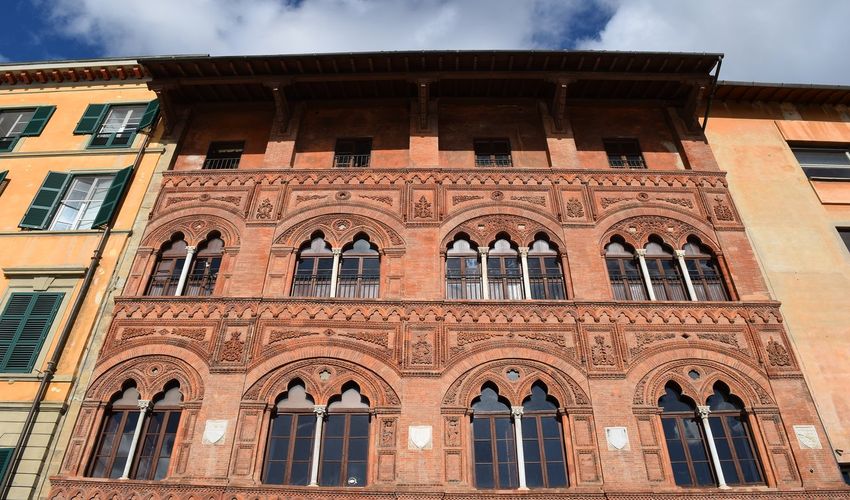
Tuscan palace of Agostini compiles antiquity, scholarly scriptures, and a modern-day gathering hub altogether. Also known as the Red Palace, its nickname is an indicator of the terracotta-decorated facade, made with red Tuscan soil. Agostini palace dates back to the 14th century built by Giovanni Pisano – one of the most admirable Renaissance architects.
Serving as “café-tobacco” today, this opulent palace was once a residence to royal families and later harboring the research center of Pisan scientific groups. Paintings, pictures, and reconstructions from various timelines, tell stories of many ownerships and the quaint past of Red Palace. Upon your visit, enrich your experience with Lumière cinema presented in the back wall of Agostini palace; a pleasant addition to Red Palace’s cultural trip.
13. Santa Maria Della Spina – St. Mary Church
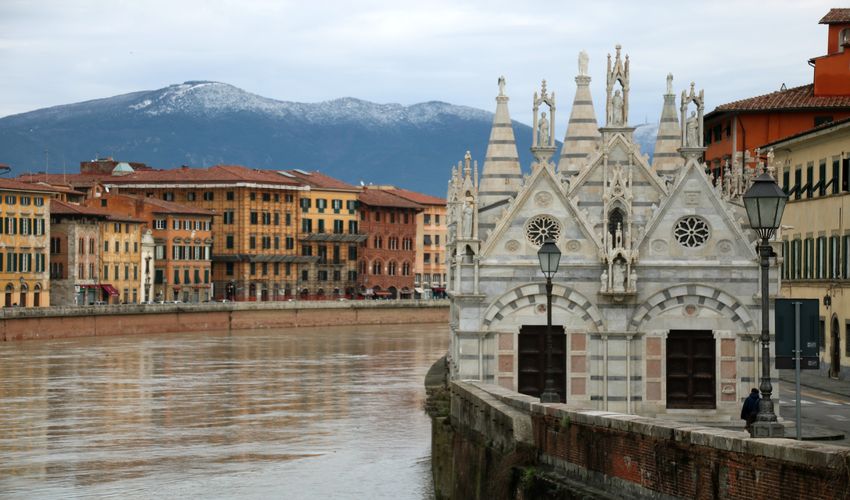
Described as the white gem, the gothic Church of Santa Maria sits graciously on the southern banks of Arno. The glimmering white marble of this church is visible from numerous viewpoints throughout Pisa. Santa Maria church was built in the 13th century. Although a total reconstruction took place in the 19th century to prevent sinking of the church in the Arno River.
Today, the river is still on the rise, and the church of Santa Maria is under unceasing supervision. On the interior, statues such as the famous Madonna of Roses sculpture, astounding paintings, and ancient furniture are other attractions of the peerless Renaissance church. Located at a short distance from the tower, take a walk on the river’s bank and enjoy the shimmering view of the historic marble crown of Pisa.
14. Palazzo Della Carovana – Square of Knights
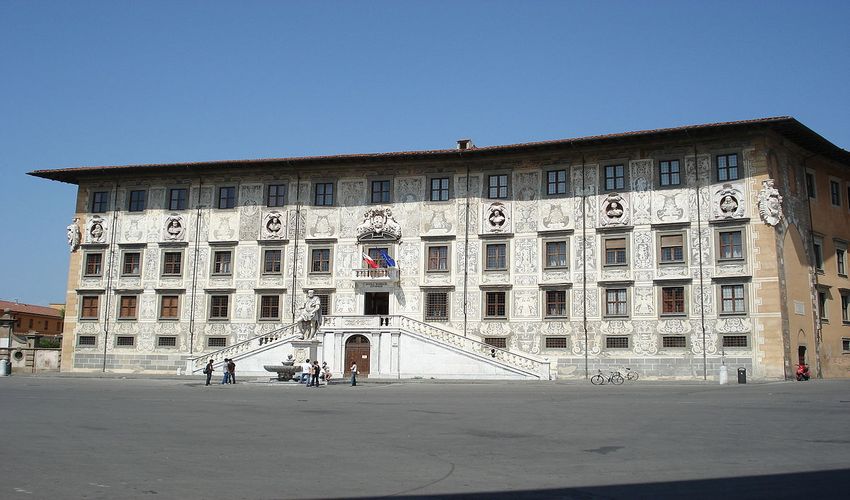
Surrounded by Renaissance-style buildings, the night square is a witness to events that decided the destiny of Pisa. Vasari Square is noted as the political heart of the city over many centuries. The square sits next to the knight’s church; a basilica built with rusty red walls, decorated artfully with white marble on its facade. Allegorical sgraffiti, a statue of triumphed Cosimo I and raids of Pisan Grandukes are the inspiring decorations of this site.
The colorful history of the Maritime era in Pisa is well-presented on the interior parts of Knight’s church; sitting on the side of Knight’s Square. Its painted ceiling tells the stories of naval warfares and Ottoman and Saracen banners are hung as an emblem of triumph; remarking the victory of San Stephano’s knights and Pisa, consequently.
The opposite side of the square is a fascinating clock tower. Once a seat to the medieval government, this building serves as the university library today. Tales of treason and power are murmured about the clock tower of knights. Immerse in the place’s essence that jotted the faith of Pisa, while treating yourself to a cup of Italian espresso at a nearby cafe.
15. Basilica Romanica di San Pietro Apostolo – St. Peter Church
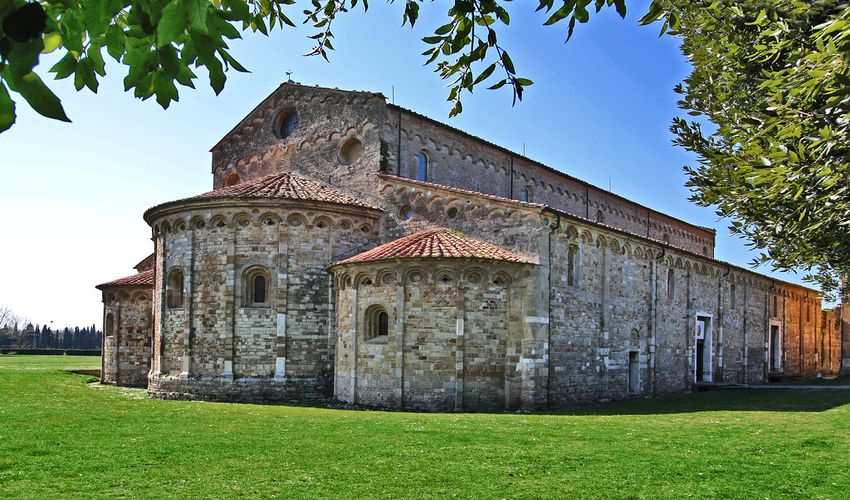
Secluded from the urban area of Pisa, the church of St. Peter holds historic significance dating back to Roman and early Christian eras. It is noted as one of the early Paleo-Christian churches, founded on an ancient Roman temple. According to legends, the church of St. peter is built on a sacred spot; the ground touched by St. Peter’s feet upon his ship’s landing to Pisa; pinpointing the ancient coastline of Ligurian sea, this church is now miles away from the shore.
Excavated items traced back to the roman era, colorful fresco decorations and ancient furniture are the mentionable valuable articles of St. Peter Church. This Basilica is located on the road to the marine of Pisa; a perfect to contribute a cultural touch, to a day trip to sand-line beaches of this ancient port.
Enchanting thermal waterfalls and sun-kissed beaches are within a few miles of Pisa. Join your cultural travel experience with the beauty of Tuscan landscapes for a whole and exquisite travel to Pisa. You can fly directly to Pisa’s International Airport. Train and bus routes connect this city to other attractive destinations like Florence and Milan.